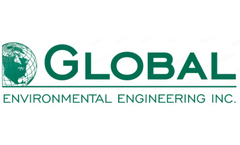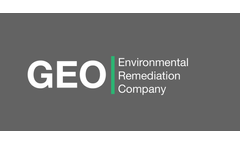soil vapor extraction Articles
-
Horizontal Soil Vapor Extraction and Horizontal Air Sparge Wells Case Study-
Directional Technologies Is The Expert At Horizontal Soil Vapor Extraction A horizontal soil vapor extraction well and two horizontal air sparge wells rapidly remediate contamination in situ under a research and development facility. These horizontal wells were installed by environmental directional driller Directional Technologies with no access to inside this sensitve facility. This site was ...
-
Common Treatment Train for Nonhalogenated SVOCs
A treatment train is the combination of different treatment technologies. A system diagram of a common treatment train for nonhalogenated SVOCs is illustrated below. A thermally enhanced soil vapor extraction system is used to pull SVOC vapor from the contaminated soil. Electrodes are installed in the contamination zone to enhance the desorption of SVOCs from the contaminated soil. The ...
-
Soil and Ground Water Remediation Case Study
On this State Funded Clean-Up project, Global was the project engineer and was responsible for the design of an air sparging/soil vapor extraction remediation system. The system included five soil vapor extraction wells and twelve sparging wells that operated on a rotating schedule. One of the soil vapor extraction wells and nine of the sparging wells were installed as horizontal wells beneath ...
-
Horizontal Soil Vapor Extraction Wells
As part of a Corrective Action Plan (CAP) submitted to NYSDEC, a consultant selected Horizontal Soil Vapor Extraction Wells (HSVE) to expand an on-site vapor extraction system in New York. Directional Technologies worked with the consultant on the horizontal well screen design and well layout of three (3) HSVE wells, spaced 50-feet apart, and constructed with 4-inch Schedule 80 PVC materials. Due ...
-
Application of an innovative In-Situ thermal remediation process for removal of petroleum hydrocarbons at a former FDOT maintenance yard
Subsurface Petroleum Hydrocarbons: Recovery and Removal Mechanisms Dissolved-Phase Recovery Pump and Treat Vapor-Phase Recovery Soil Vapor Extraction, Air Sparging Biological Removal Natural Attenuation, Source: Biosparging ...
-
Steam Injection with Soil Vapor Extraction Remediation
Project description for soil vapor extraction / steam injection remediation by GWS Environmental Contractors Inc. The use and implementation of steam injection remediation on No 2. heating oil. Project Location: 18 Institute Street Freehold, NJ. Project: Residential Fuel Oil Remediation Project using Steam/SVE. I. Extent of Contamination: Fuel oil contamination exists in the rear yard immediately ...
-
Soil Vapor Extraction (In Situ)
Introduction Soil vapor extraction (SVE) is an in situ unsaturated (vadose) zone soil remediation technology in which a vacuum is applied to the soil to induce the controlled flow of air and remove volatile and some semivolatile contaminants from the soil. The gas leaving the soil may be treated to recover or destroy the contaminants, depending on local and state air discharge regulations. ...
-
Horizontal Remediation Wells - Case Study
Why wait 30 years…when HRWs are here today! After 30 years of remediation, the responsible party became frustrated with the limitations of vertical wells and the inability of methods used to achieve cleanup goals. Seeking site closure, the soon to be client, turned to Directional Technologies and Horizontal Remediation Wells (HRWs) to break the stalemate. The HRWs were engineered to ...
-
Proposed Standard Test Method for Measurement of Pneumatic Permeability of Partially Saturated Porous Materials by Flowing Air
This proposed standard describes a laboratory test method for the measurement of the coefficient of permeability for airflow (pneumatic permeability) through porous media (e.g., soils) partially saturated with water. Control and measurement of the airflow is effected at the inlet of the specimen. The permeameter cell is fitted with dual transfer lines that isolate the specimen pressure drop from ...
-
Is a Horizontal Remediation Well System Right for My Project?
So your remediation project is moving towards a choice of remedy, whether it involves Dual Phase Extraction, Total Phase Extraction, Biosparging, Soil Vapor Extraction (SVE), Air Sparge (AS), or Chemox Delivery, or any combination of the above. Now, the concept of horizontal remediation wells (HRW’s) for your site seems intriguing. So what do you need to consider before proposing a ...
-
Soil Vapor Extraction (Ex Situ)
Introduction: Ex situ soil vapor extraction (SVE) is a full-scale technology in which soil is excavated and placed over a network of aboveground piping to which a vacuum is applied to encourage volatilization of organics. Soil piles are generally covered with a geomembrane to prevent volatile emissions and to prevent the soil from becoming saturated by precipitation. The process includes a ...
-
South LA: SVE Case Study (C3 Technology)
An active industrial facility in South Central Los Angeles was impacted by tetrachloroethylene (PCE) and trichloroethylene (TCE; former staging area degreasing) operations as a part of its operations. A phased approach to soil vapor extraction (SVE) remediation was employed: the goal of Phase I was to attain high contaminant mass removal rates with very high VOC vapor concentrations typically ...
-
Thermally Enhanced Soil Vapor Extraction
Introduction Thermally enhanced SVE is a full-scale technology that uses electrical resistance/electromagnetic/fiber optic/radio frequency heating or hot-air/steam injection to increase the volatilization rate of semi-volatiles and facilitate extraction. Thermally enhanced SVE is normally a short- to medium-term technology. Electrical Resistance Heating Electrical resistance heating uses an ...
-
Mississauga Case Study (In Situ Gas Thermal Remediation (GTR™))
In Situ Thermal Desorption in conjunction with soil vapor extraction was used to remove volatile organic compounds which contaminated the groundwater and saturated soil areas of a former metal fabricating facility in Ontario, Canada. The site had VOCs detected above the Canadian water standard in various monitoring well locations. The remediation goal was achieved in 84 days and saw a 98% ...
-
Redeveloping Brownfields case study
Challenge: A property owner sought the services of Antea Group to assist in the Brownfield redevelopment of a 17-acre former railroad depot located in a high-profile urban area. The extent and magnitude of known soil and groundwater impacts combined with the time required to remediate the site was a major obstacle to the successful sale and subsequent development of the site. Antea Group ...
-
In Situ Physical/Chemical Treatment for Soil, Sediment, and Sludge
The main advantage of in situ treatment is that it allows soil to be treated without being excavated and transported, resulting in potentially significant cost savings. However, in situ treatment generally requires longer time periods, and there is less certainty about the uniformity of treatment because of the variability in soil and aquifer characteristics and because the efficacy of the ...
-
DTI installs horizontal remediation wells under busy intersection
The Issue A retail gasoline station in Tallahassee Florida with leaking underground storage tanks sits atop a local groundwater divide, causing petroleum hydrocarbon plumes to migrate in opposite directions from the site. In one direction, the plume has migrated under a residential neighborhood on downward sloping terrain, and in the opposite direction, the plume has migrated under a major ...
-
Texas Superfund Case Study
The site is a former refinery that occupied approximately 64 acres of land in West Texas. Refinery operations produced all grades of gasoline, tractor fuels, diesel, distillate products, and fuel oils and operated between 1939 and 1954. As a result of past waste management practices, releases to soils and ultimately ground water occurred, resulting in the formation of a dissolved-phase benzene ...
-
DTI installs 3 blind horizontal remediation wells in cobble
The Issue An active retail gas station next to a wetland area has benzene and trimethylbenzene plumes in a water table aquifer containing sand, gravel and cobbles. Rock fragments and boulders several feet in diameter lie in the vadose zone, between the ground surface and the water table. Business at the gas station would slow down or stop for an extended period of time if a vertical air sparge ...
-
Soil Sampling under Buildings and Solving Vapor Intrusion using Horizontal Drilling
The Issue: The New Jersey Department of Environmental Protection (NJDEP) mandated soil and groundwater sampling under an active pharmaceutical company manufacturing building in order to address vapor intrusion inside the building. Installation of vertical borings and wells through the building slab was not practicable without profound disruption of manufacturing activities inside the building. ...
Need help finding the right suppliers? Try XPRT Sourcing. Let the XPRTs do the work for you


